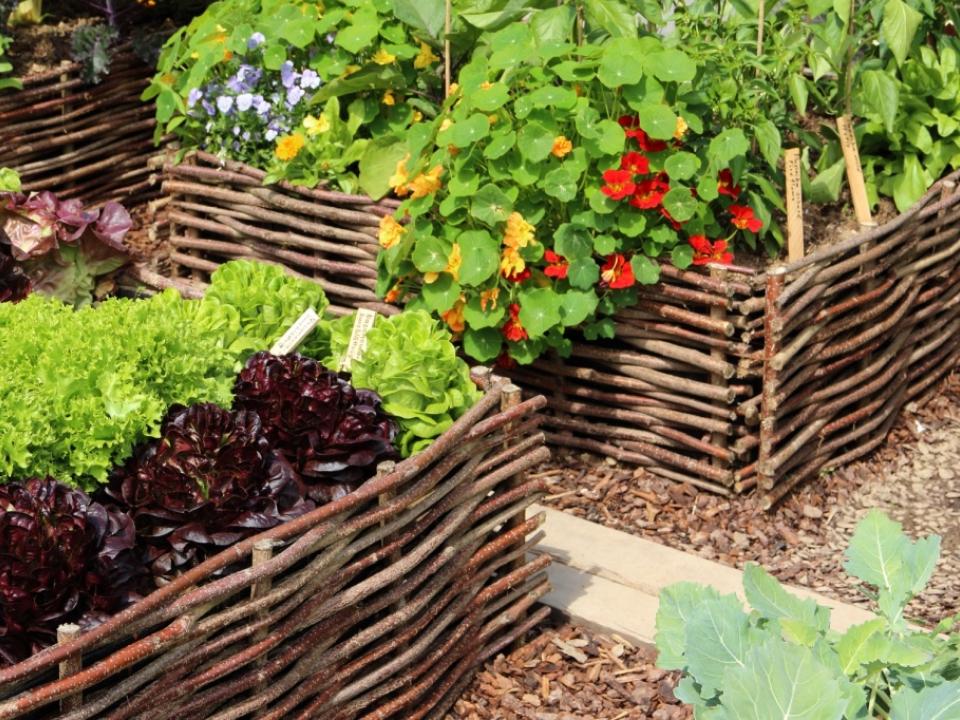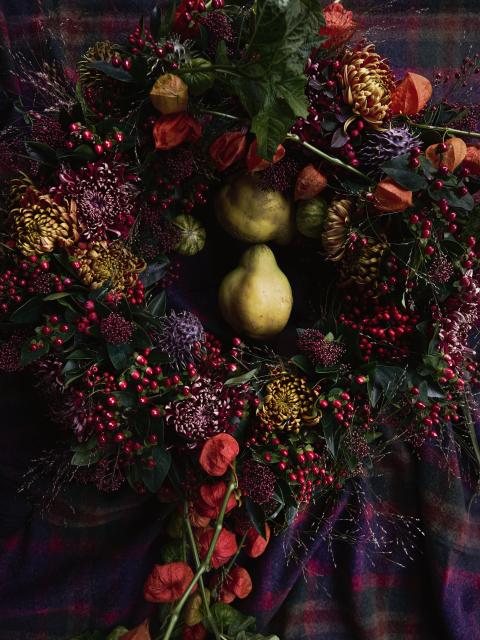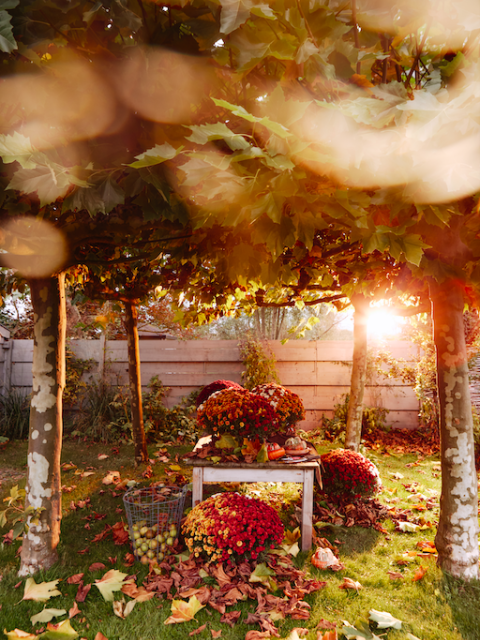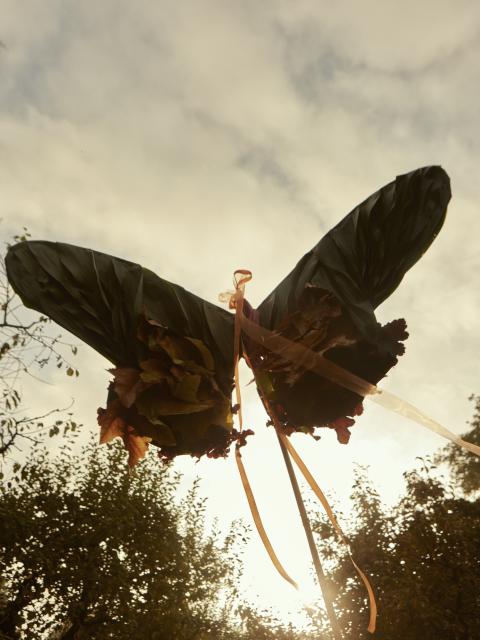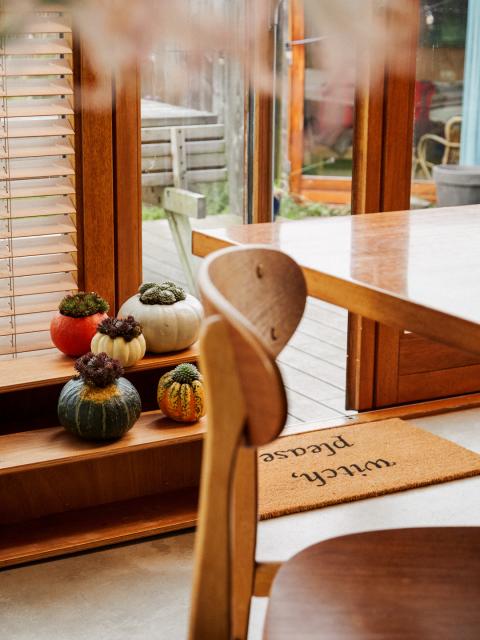Strong natural material
Willow is hot right now - it’s suddenly everywhere. In natural-looking woven fences and dividers in the garden. In woven frames against which plants and vegetables can grow. In playhouses, woven art and as a back-to-nature gazebo. Willow withies are willow shoots which are very suitable for weaving thanks to their length and flexibility. You can make a mini kitchen garden with them fairly easily, and it will also look great filled with prickly heath and checkerberry.
Needed for 1 willow container:
● Willow rods (approx. 2 bunches)
● Secateurs or lopper
● 4 posts
● Hammer
● Nails
● Sandpaper
● Landscape fabric
● Staple gun
Collected all the ingredients? Let's go to work!
Step 1. Place the willow rods in water until they’re soft. This can take between two days and three weeks.
Step 2. Measure out one square metre, and hammer in sturdy posts at each corner. They should extend some 25 cm above the ground.
Step 3. Distribute four thicker willow rods across each side, which are placed vertically in the ground. Don’t trim the length yet - it will make the weaving easier.
Step 4. Cut the rods for weaving to length with a generous allowance - the weaving means that you will need slightly more. Feed them between the posts from bottom to top. Make sure they’re secure: a couple of taps with the hammer will help.
Step 5. Secure the four sides to the posts with long nails, cut the vertical willow rods to size, sand down sharp tips.
Step 6. Cover the inside and base with landscape fabric, secure firmly with a staple gun, fill with soil and seeds or plants.

